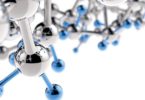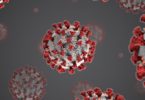The Streptococcus lactis is responsible for
(a) Conversion of milk into curd
(b) Conversion of molasses into alcohol
(c) Tanning of leather
(d) Flavoring the leaves of tea and tobacco
Waksman got the Nobel Prize for the discovery of
(a) Penicillin
(b) Streptomycin
(c) Chloromycetin
(d) Neomycin
A free living anaerobic bacterium capable of N2 fixation in soil is
(a) Rhizobium
(b) Azotobacter
(c) Streptococcus
(d) Clostridium
Related: Mammals Questions and Answers
Fresh meat is putrefied by
(a) Clostridium
(b) Pseudomonas
(c) Proteus
The bacteria (Clostridium botulinum) that cause botulism are
(a) Obligate aerobes
(b) Facultative aerobes
(c) Obligate anaerobes
(d) Facultative anaerobes
During rainy seasons, the ground becomes slippery due to the dense growth of
(a) Lichens
(b) Bacteria
(c) Green algae
(d) Cyanobacteria
Antibiotics are mostly obtained from
(a) Bacteria (Actinomycetes)
(b) Virus
(c) Angiosperms
(d) Fungi
A compound which is produced by an organism and inhibits the growth of other organism is called
(a) Antiseptic
(b) Anticoagulant
(c) Antibiotic
(d) Anti-allergic
Ralated: Carboxylic Acid MCQs
Root nodules contain
(a) Nostoc
(b) Chlorobium
(c) Rhizobium
(d) Azotobacter
The chemotherapeutic substance derived from living organism that has an inhibitory effect on parasitic organism is known as
(a) Exotoxin
(b) Bactericide
(c) Antibody
(d) Antibiotic
Who pointed out the significance of blue-green algae in nitrogen fixation?
(a) G. E. Fogg
(b) P.K. De
(c) R.N. Bolton
(d) Y. Bharya
The symbiotic nitrogen fixing bacteria present in root nodules of legumes belongs to genus
(a) Xanthomonas
(b) Pseudomonas
(c) Rhizobium
(d) Acetobacter
Biofertilizers include
(a) Nitrogen fixing bacteria
(b) Nitrogen fixing cyanobacteria
(c) Mycorrhiza
(d) All of these
Related: Branches of Science Definition
Which bacteria is responsible for the reduction of nitrates in to nitrogen, in soil?
(a) Nitrosomonas
(b) Pseudomonas
(c) Rizobium
(d) Clostridium
The bacterial decomposition of nitrogenous organic compounds in the absence of abundant oxygen usually results in the formation of substance of offensive odour, chiefly sulphur compounds. Such anaerobic decomposition is called
(a) Putrefaction
(b) Nitrification
(c) Denitrification
(d) N2 fixation
Anabaena has immense potential as a
(a) Biofertilizer
(b) Food
(c) Medicines
(d) Sewage disposal
Nitrogen fixing bacteria are associated with
(a) Leguminasae
(b) Cruciferae
(c) Gramineae
(d) Malvaceae
Related: Structure of an Atom quiz
A suspension of killed or attenuated bacteria useful for artificial immunization is
(a) Bacteriocin
(b) Bacteriolysin
(c) Bacterin
(d) Barophile
Nitrifying bacteria, Nitrosomonas and Nitrobactor
(a) Convert (oxidise) ammonia or ammonium compounds into nitrates
(b) Convert nitrate into nitrogen
(c) Convert nitrogen into nitrates
(d) Convert carbon dioxide into carbohydrates
The main role of bacteria in the carbon cycle involves
(a) Photosynthesis
(b) Assimilation of nitrogenous compounds
(c) Chemosynthesis
(d) Digestion or breakdown of organic compounds
For retting of jute the fermenting microbe used is
(a) Methophilic
(b) Butyric acid bacteria
(c) Helicobactor pylori
(d) Streptococcus lactin
Related: Cell Cycle and Cell Division mcq with answers
Clostridium is an example of
(a) Obligate aerobic nitrogen fixing bacteria
(b) Facultative nitrogen fixing bacteria
(c) Non-nitrogen fixing bacteria
(d) Aerobic nitrogen fixing bacteria
Wine turns sour because of
(a) Heat
(b) Aerobic bacteria
(c) Anaerobic bacteria
(d) Exposure to light
All of the following statements concerning the actinomycetous filamentous soil bacterium Frankia are correct except that Frankia
(a) Can induce root nodules on many plant species
(b) Cannot fix nitrogen in the free-living state
(c) Cannot fix specialized vesicles in which the nitrogenase is protected from oxygen by a chemical barrier involving triterpene hapanoids
(d) Like Rhizobium, it usually infects its host plant through root hair deformation and stimulates cell proliferation in the host’s cortex
Which of the bacterium cause the fermentation of milk and other plant products?
(a) Lactobacillus
(b) Hay bacillus
(c) Acetobacter
(d) Rhizobium
Related: Anaerobic Respiration Questions
A large number of organic compounds can be decomposed by
(a) Chemoorgano
(b) Pseudomonas
(c) Acetobacter
(d) Mycoplasma
Bacteria which convert the nitrogen of the air to nitrogenous compounds are called:
(a) Nitrifying
(b) Nitrogen fixing
(c) Denitrifying
(d) Putrefying
Nitrifying bacteria are those which can convert
(a) Atmospheric nitrogen into ammonia
(b) Ammonia into nitrites
(c) Nitrites into nitrates
(d) Nitrates into ammonia
Micro-organisms are used in
(a) Sewage disposal
(b) Biological control of diseases
(c) Biological warfare
Related: MCQ on Bone and Cartilage
Bacteria which directly convert atmospheric nitrogen into nitrogen compounds are called
(a) Denitrifying bacteria
(b) Putrefying bacteria
(c) Nitrogen fixing bacteria
(d) Nitrifying bacteria
Which of the following red pigments is present in root nodules of bacteria?
(a) Phycoerythrin
(b) Bacterio chlorophyll
(c) Leg haemoglobin
(d) Bacterio viridin
Which of the following is used to cure off the bitterness of tea leaves?
(a) Bacillus subtilis
(b) B. megatherium
(c) B. lactis
(d) B. mycococcus
Which of the following processes is performed only by bacteria?
(a) Ripening of cheese
(b) Synthesis of antibiotics
(c) Humus formation
(d) Formation of vitamin ‘K‘ in the intestine
Related: Blood Trivia Questions
Which of the following soil microorganisms breaks down plant and animal protein into ammonia?
(a) Bacillus vulgaris
(b) Nitrosomonas
(c) Pseudomonas
Bacillus megatherium is used in
(a) Food poisoning
(b) Food processing
(c) Food manufacturing
Fermentation is by
(a) All microorganisms
(b) All fungi
(c) All bacteria
(d) Some fungi and some bacteria
The denitrification means
(a) Reduction of NO2 to ammonia form by bacteria in the soil
(b) Oxidation of ammonia to nitrate form
(c) Conversion of ammonia to amino acids
(d) Conversion of ammonia and nitrates to gaseous nitrogen in the soil
Related: Boron Practice Problems
Plasmid is used as a carrier because
(a) It has antibiotic resistance genes
(b) Both of its ends are replicating points
(c) It can go between eukaryotic and prokaryotic cells.
(d) It is circular DNA which has the capacity to bind eukaryote DNA.
Bacillus thuriginensis is a good
(a) Biofertilizer
(b) Biopesticide
(c) Biofuel
(d) Single cell protein







